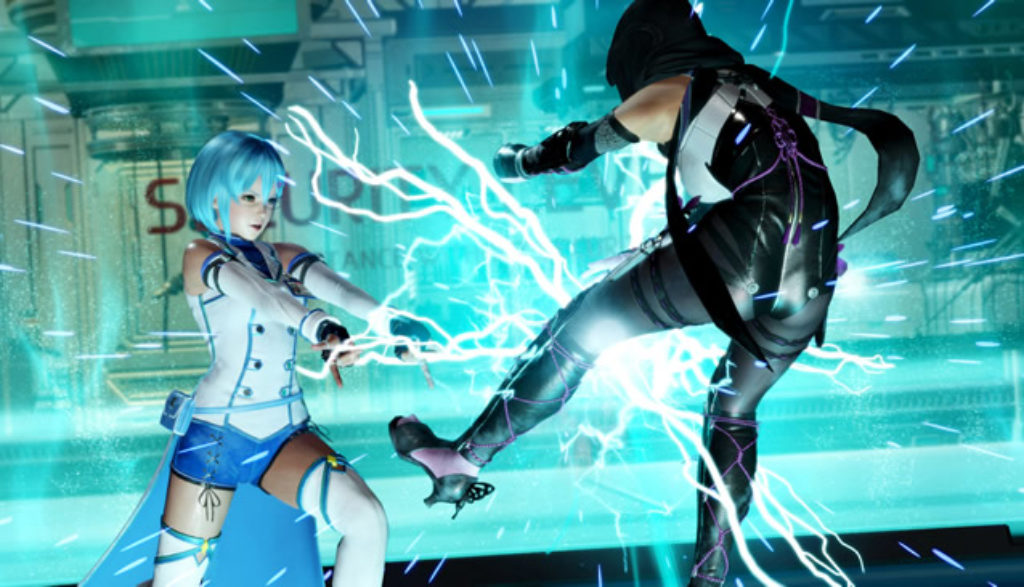
Despite superficial similarities, fighting games are not all birds of a feather. These brawling battlers feature various depths of character interaction, possible moves and button combinations in their mix. They strive to be easily accessible, but still strategically intricate. And gamemakers work hard at finding a perfect balance, all in an effort to make their titles stand out from the pack.
Back in 1996 when Tomonobu Itagaki designed the first Dead or Alive fighting game, he had that perfect balance point in mind, too. But he also introduced another stand-out-from-the-crowd feature to grab fans’ attention: jiggling sexiness. It worked. Fanboys flocked to the franchise’s solid gameplay, while also ogling the fleshy physics of its scantily clad female fighters.
In fact, all that buxom bouncing was so popular that the gamemakers came out with the voyeuristic and creepy Dead or Alive Xtreme Beach Volleyball in 2003, a game that dispensed with the fighting altogether. (And for the most part, the characters’ clothing too.) But now that we’ve reached a more, uh, thoughtful 2019, what can gamers and parents expect to encounter in the latest entry in this franchise, Dead or Alive 6?
Let’s start with the basics, shall we?
The game’s narrative jumps from character to character and follows their story threads. Each tale revolves around various competitors in an international Dead or Alive tournament, one of whom is a sweet-minded young female fighter named Honoka. It seems she has quite a bit in common with a deceased former villain of the original series named Raidou. In fact, as these threads unwind, we learn that someone is going to great expense and effort to follow Raidou’s bloodline and resurrect him in cyborg form.
In addition to introducing players to compelling characters and high-tech intrigue, though, the purpose of this multi-hour story campaign is to deliver a light tutorial and help gamers familiarize themselves with the unique styles and moves of the 24 character roster here. Those move sets are varied and unique to each battler—ranging from rough-edged street-fighting skills to graceful martial arts techniques to moves with a Bruce Lee-ish swagger.
The fact is, from a pure game-mechanics perspective, there are few fighting titles that flow as well or are as easy to slip into as a Dead or Alive game. From being able to sidestep, to trading blows, to grabbing an attacker’s fist mid-strike and countering defensively, it all works smoothly and intuitively. And even newcomers can ease in pretty effortlessly with simple combos that feel powerful right out of the gate. Additionally, Quest Mode and Arcade Mode offer other single player options to help players get up to speed and ready for multiplayer battles.
So what about the potentially negative side of Dead or Alive?
Well, here’s where things get interesting. It’s plain that the Team Ninja’s gamemakers have heard the complaints and tried to accommodate those who’ve been concerned by dialing back some of the sensual content issues from past iterations.
The female outfits, for instance, initially appear to cover more and seem less deliberately provocative. At first anyway. Skimpier outfits can be unlocked and purchased in game if you so desire. And even a casual jeans and T-shirt apparel can earn an eye roll—depending on the buxom character inside the shirt. The logo of one such T-shirt in particular is an especially crude double entendre.
Hyper-realistic shimmy and shake? Yep, that’s still abundantly part of the physics equation. With a plethora of body types and tons of leaping, kicking and lunging moves, the game’s focus on that feminine bounce is unmissable. And with an in-game camera, gamers can also zoom in on certain physical attributes or short-skirt reveals to snap sexualized pics.
But don’t forget: This is also a game based on heavy pummeling. Characters end up bruised, bloodied and tattered in battle, too. And there’s some foul language in the storylines—including s-words and the use of “h—.”
However, if you so choose, all of those content issues can be turned off completely in the options menu. That’s a pretty big adjustment from previous games in the series. And for those who are interested in a solid fighting game without any negative distractions, it’s a big one … even if all those problems remain just a quick settings adjustment away.

After spending more than two decades touring, directing, writing and producing for Christian theater and radio (most recently for Adventures in Odyssey, which he still contributes to), Bob joined the Plugged In staff to help us focus more heavily on video games. He is also one of our primary movie reviewers.